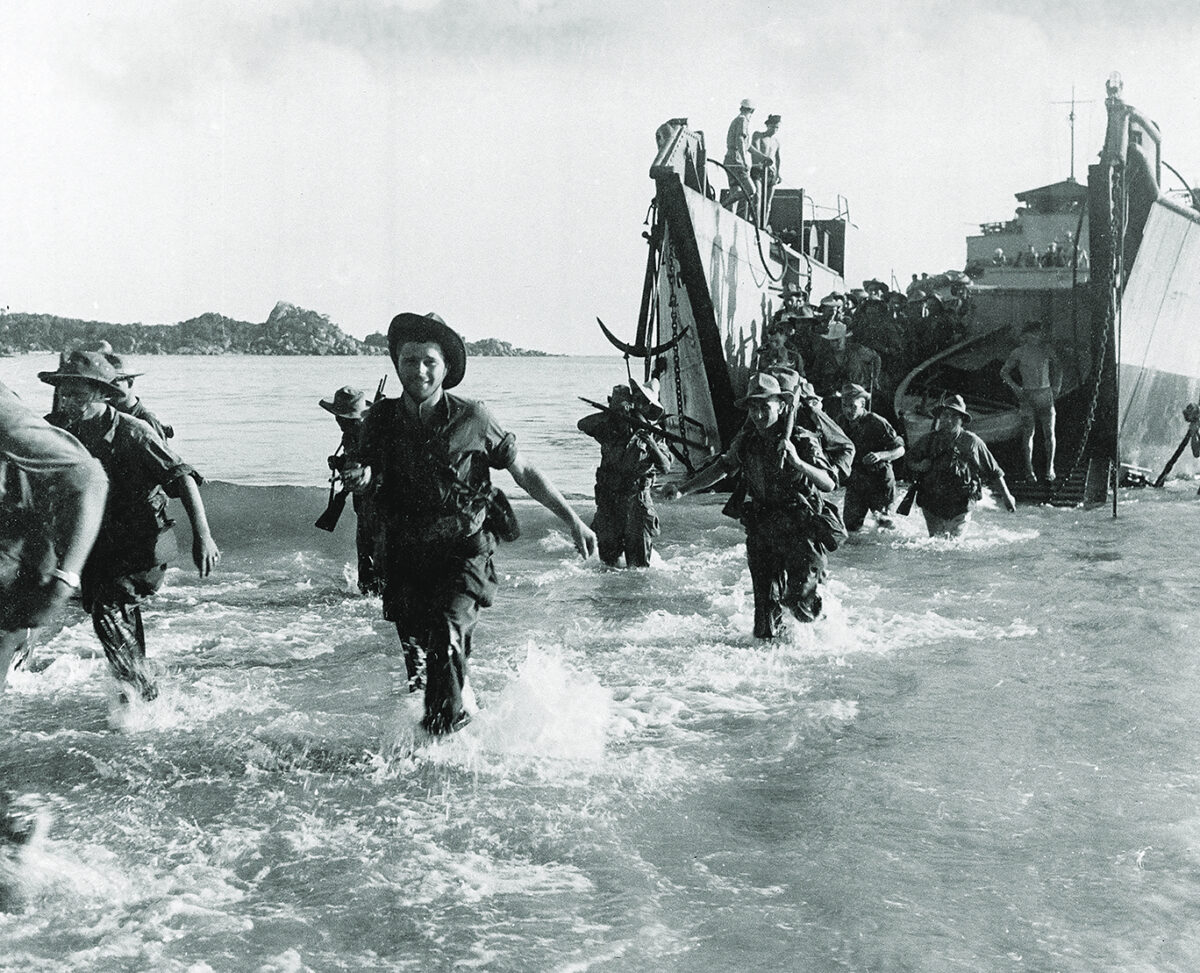Sampans glide silently in the darkness over an inland waterway in North Vietnam’s Red River Delta. Five Frenchmen and 120 Vietnamese commandos are on their way to make a deep behind-the-lines raid on Ho Chi Minh’s communist Viet Minh guerrillas. Their mission involves collecting intelligence, seizing prisoners for interrogation, and sowing confusion behind enemy lines. Among these nocturnal predators are many former Viet Minh fighters captured by the French. The lone French officer and his NCOs operate in the knowledge that they may be killed by their own men at any time. This was life for the French commandos in North Vietnam from 1951 to 1954, predecessors of the American Green Berets.
When Gen. Jean de Lattre de Tassigny became commander-in-chief of the French Far East Expeditionary Corps in December 1950, French forces had been struggling for nearly six years to reestablish control over the Indochina colonies. Japanese forces had destroyed the French occupation army in 1945, leaving a postwar power void exploited by Ho Chi Minh’s Viet Minh. The arrival of de Lattre, a legendary French soldier known to his men as “King Jean,” reinvigorated the badly demoralized Expeditionary Corps.
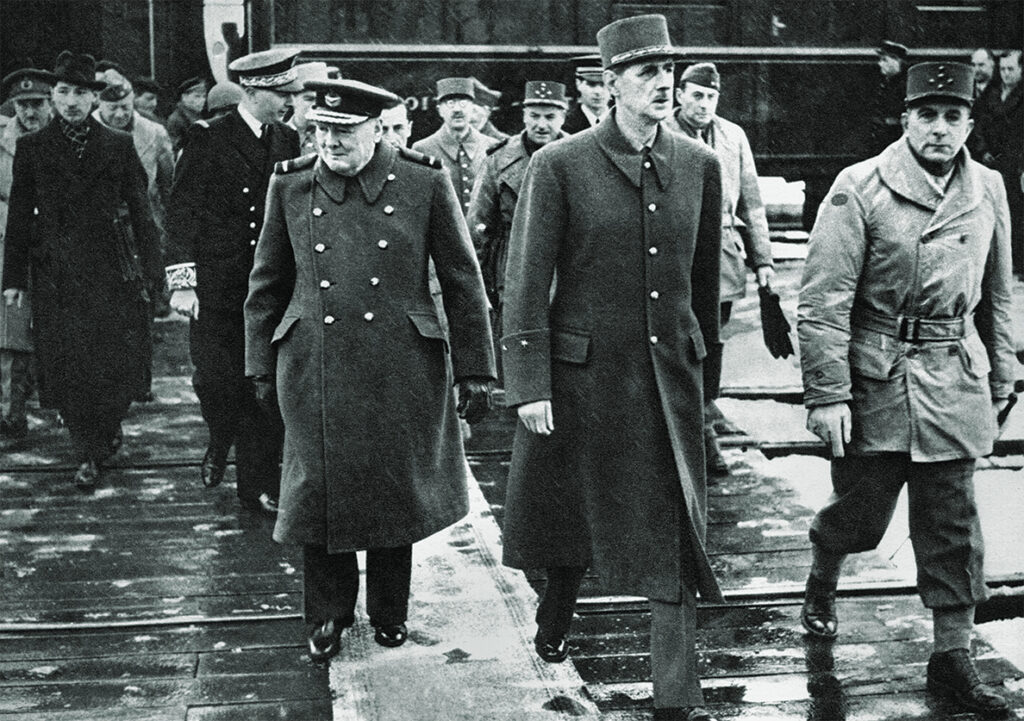
Realizing the futility of following the old rules of combat, de Lattre cleared out incompetent officers and introduced new ideas, weapons, and tactics, including a plan to create a series of new commando groups for use in northern Vietnam. Composed almost entirely of Vietnamese troops with a few French officers or NCOs in command, these units took the war to the Viet Minh using ruthless methods and intimate knowledge of the terrain. It was a war of no quarter, fought almost exclusively at night with knives as much as submachine guns by men disguised as the enemy—men with a special gift for killing in the dark.
Commandos
Even before the World War II liberation of Paris, Free French leader Gen. Charles de Gaulle planned to reestablish French control of the Indochina colonies of Laos, Cambodia, and the three regions of Vietnam—Cochin-China in the south, the central region of Annam, and the northern region of Tonkin. In 1944, the first Free French commando groups, known as Gaurs (wild buffalo), were dropped into Japanese-occupied Laos. Torture was inevitable in cases of capture, and cyanide pills were issued regularly. Some commandos were highly trained veterans of the Free French companies of the British Special Air Service (SAS) and continued to wear the regiment’s berets.
On March 9, 1945, the Japanese Army deposed the French Vichy government in Indochina, slaughtering entire garrisons in surprise attacks. Two French Gaur groups were dropped into Tonkin by British planes to assist the withdrawal of a column of starving and bloodied French colonial troops. Few Gaurs survived, most dying in suicidal attempts to delay the Japanese.
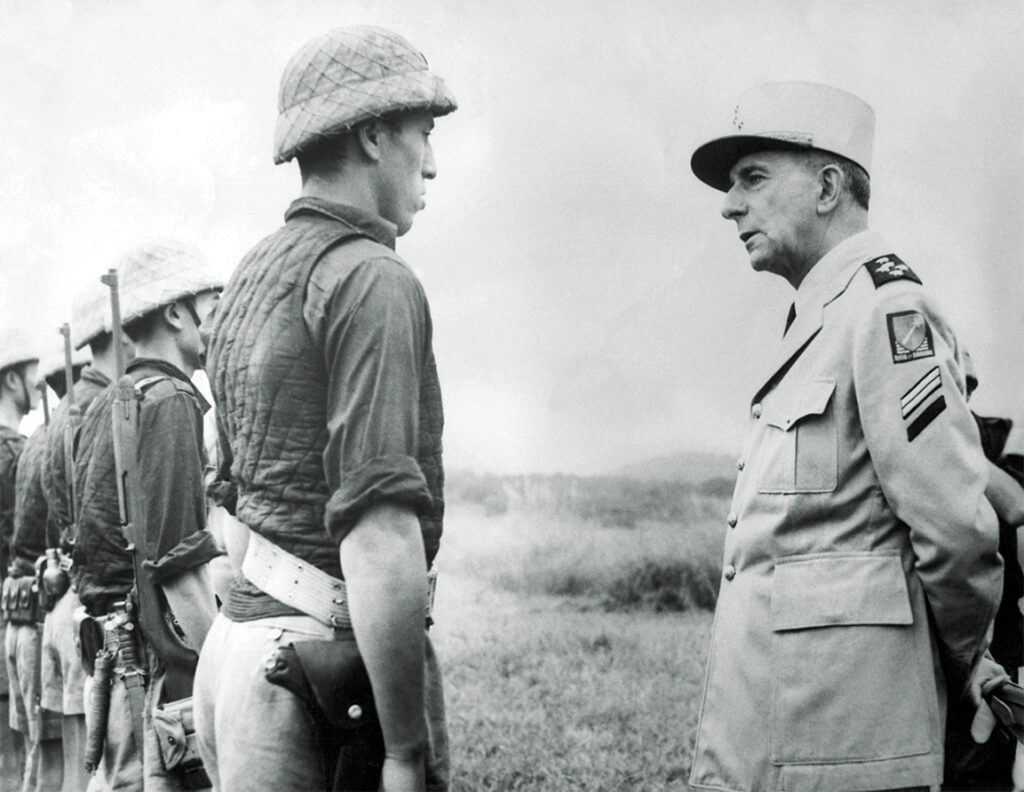
These early commandos were reliant on British training, transport, and equipment, as the American Office of Strategic Services (OSS, the predecessor to the CIA) initially supported Ho Chi Minh’s nationalist guerrillas over the French. This preference was in line with President Franklin D. Roosevelt’s vision of a postwar world where national self-determination would replace European imperialism.
After years of bitter fighting in Vietnam’s jungles and mountains, the performance of mixed groups of French and Vietnamese commandos at the May-June 1951 Battle of Ninh Binh, also known as the Battle of the Day River, convinced de Lattre to make the commandos a formal part of the French Expeditionary Corps. When the Viet Minh’s 320th Division launched an offensive along the Day River, they were opposed by small French units holding two limestone crags at Ninh Binh. One of the peaks was held by “King Jean’s” son, Bernard de Lattre, following his father’s order to hold the French position at all costs. A mostly Vietnamese commando team led by a burly young NCO, Roger Vandenberghe, was called upon to reinforce the young lieutenant’s position by climbing the crag under heavy fire. Machine gun fire sent climbers plummeting down the cliff. Vandenberghe was eventually hit. Wounded, he signaled his second-in-command, Sgt. Tran Dinh Vy, to finish the assault. The slight but formidable Vietnamese sergeant was a former seminarian who had become a master of guerrilla tactics.
During the attack, the bleeding Vandenberghe retrieved the body of his friend, Bernard, who had become a victim of Viet Minh mortar fire. This deed endeared him to de Lattre, who was deeply grieved by the loss of his only child. From then onward de Lattre acted as a patron to Vandenberghe, whose savage way of warfare nearly got him dismissed by French commanders who were alarmed by his methods.
Days later, “King Jean,” who would later declare Vandenberghe “the greatest soldier in Indochina,” authorized the creation of formal French Army commando units. The French commandos fought brutal, no-quarter battles in a tropical darkness where the normal conventions of war held no sway.
SAS Training
Responsibility for organizing the commandos was handed to Louis Fourcade, commander of the 1st Battalion of Colonial Paratroopers. Fourcade spent World War II as an officer in the Vichy colonial army in Indochina, with secret contacts to Free French agents working across the border in China. He was involved in fighting the Japanese in the last months of the war. The new commando units normally included 120 Vietnamese under a European officer or senior NCO, aided by four other NCOs and at least one European radio operator.
Captured Viet Minh prisoners were given the chance to avoid heavy labor by volunteering to join the new commando groups. This was a highly dangerous practice. While it recruited men intimately familiar with the enemy’s methods, it also handed arms to soldiers who might suddenly turn on their leaders at any time. Sleeping became as precarious for commando leaders as firefights with the enemy. To let one’s guard down for a minute was to invite death.
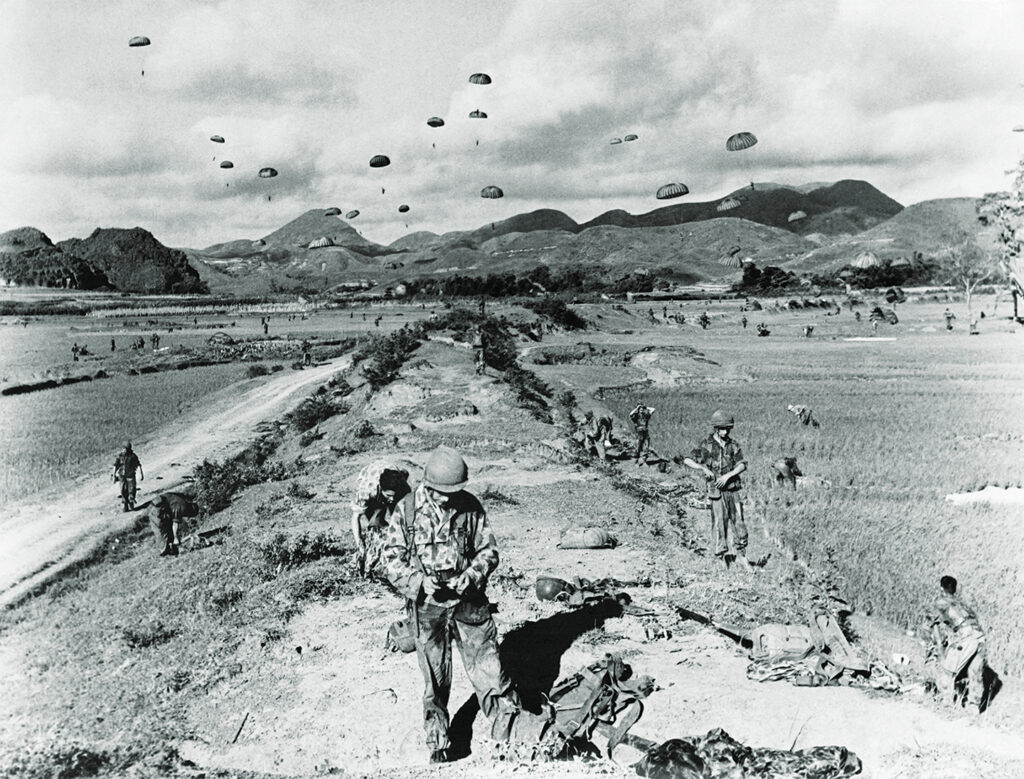
Training was carried out at the Vat Chay commando school by SAS veteran Capt. Michel Le-grand. Later training of the commandos was undertaken by one of the hardest men in the French Army—Yvan Tomassi, an officer of the Colonial Paratroops and a Free French veteran of fighting in Africa and Europe. In 1950, he lost his right hand while seizing a bomb from the hands of a trainee who had mistakenly set it to explode.
Rather than retire, Tomassi continued to jump. He was appointed trainer of the commandos in February 1952. Captured leading a raid in January 1953, Tomassi spent six months in a Viet Minh prison camp. Once interned he was singled out by French communist turncoat Georges Boudarel, who tried to break him by forcing him to dig all the graves for the camp with his left arm and the stump of the right. Tomassi was kept busy as 85 percent of the prisoners in Camp 113 died from torture and mistreatment while being forced to sing the praises of Ho Chi Minh. The resilient Tomassi survived and continued to serve as a paratrooper until 1966. Amazingly, the unrepentant Boudarel was hired as a professor by a Paris university after the war.
The commandos learned to fight at night. As Capt. Jean-Louis Delayen of 13 Commando recalled: “After having overcome the visceral fear of the night, and the completion of special training requiring the greatest discipline, the [Vietnamese] auxiliaries were convinced that, lightly armed as they were, only night action could allow them to dominate an adversary unaccustomed to not be the only ones operating at night.” Internal cohesion was achieved by recovering commando families living in Viet Minh-occupied zones, building schools, pagodas, and married quarters beside the commando base, and forming a “big family” atmosphere through the cultivation of vegetables and the raising of chickens and pigs. The commandos did not perform normal military duties such as routine patrols or guarding military posts. When necessary, they operated in conjunction with regular troops on larger military operations.
Night Operations
The commandos used weapons captured from the Viet Minh, including Thompson submachine guns and World War II-era Sten guns. Grenade launchers and small 50- or 60mm mortars completed the light armament of these highly mobile units. Many commandos disguised themselves in the black cotton uniform of the Viet Minh, complete with sneakers, palm helmets, and a Red Star insignia.
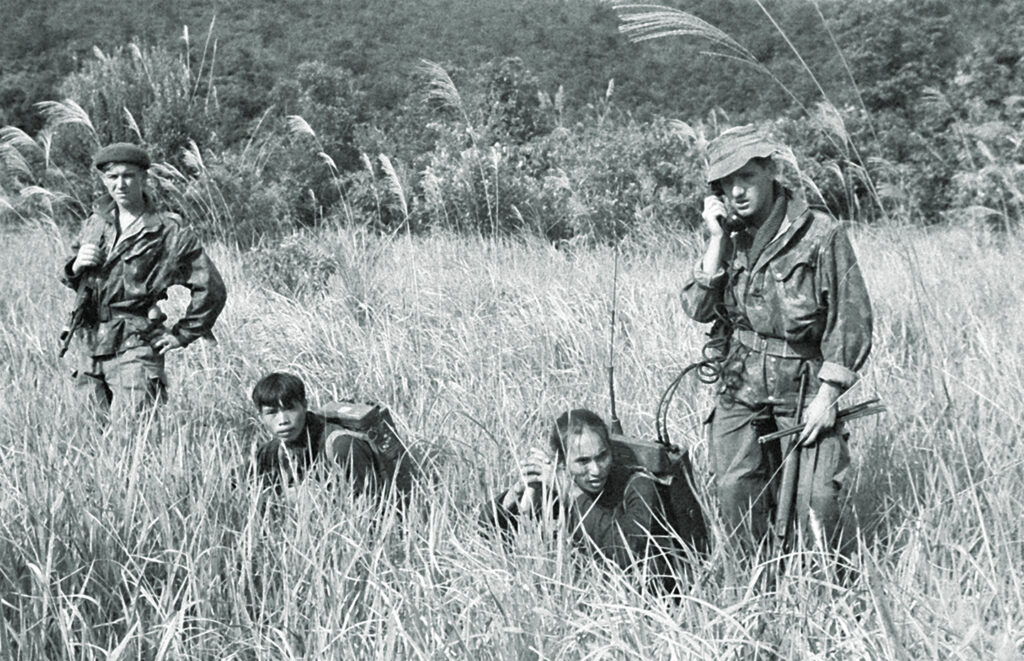
To gather intelligence, the commandos ventured deep into enemy territory to observe movements, take prisoners, and disrupt communist political networks. Attendees at Viet Minh meetings lived in fear of French commandos bursting in and firing their Thompson submachine guns from the waist. The commandos were taught to aim at the feet of their targets in close combat, as the Thompsons tended to jump upward with recoil when fired. In his memoir, Sgt. Bernard Gaudin of 25 Commando described a 1952 night ambush during a deep raid on the Viet Minh. Ambushes meant hours of silent misery, with uniforms soaked by an endless drizzle.
The raiders’ nerves were on a razor’s edge as their eyes strained to detect movement in the inky darkness. The torment of mosquitoes was unrelenting but had to be endured noiselessly. “Canh, my faithful corporal, whispers in my ear: ‘Chief, there are a lot of Viets.’ … Here we go, all the Commandos who are waiting for this break loose. We can finally cough, yell—it’s recommended. The bursts and explosions of grenades tear the night apart. Immediately, there is a pack of Viets on the mat. We hear them shouting orders to try a maneuver but we shoot at everything that moves.”
With prisoners taken and the Viet Minh column destroyed, Gaudin led his men back by a different route. The waiting Viet Minh began to rain down grenades as the commandos crossed a rice paddy. Two of Gaudin’s men were killed before fire raked the commandos from sharpshooters in the trees. A Dinassaut (armored landing craft squadron) made a welcome appearance on the river and laid down heavy fire until the shooting stopped.
Tiger Badge
This cap badge, featuring the image of a gaping tiger and an anchor, was the emblem of Roger Vandenberghe’s 24 Commando unit, who were known as “The Black Tigers.” The inscription is the motto, “Rather death than shame,” or alternatively “Death before dishonor,” written in Vietnamese. Each commando unit had its own distinctive badge.
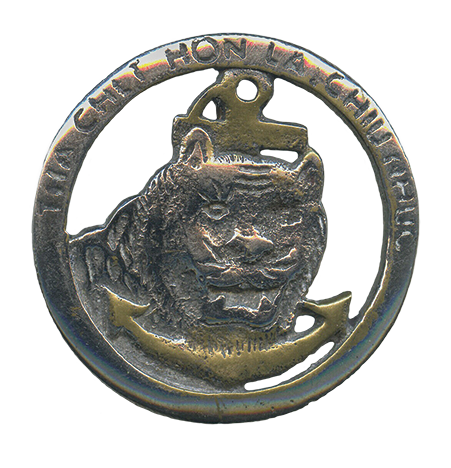
The Dinassaut were squadrons of surplus American shallow-draft LCMs (Landing Craft Mechanized), modified to bring heavy firepower to support infantry and commando operations in the shallow waterways of the Red River Delta. For this, the Dinassaut deployed heavy machine guns, 81mm mortars, and even tank turrets welded onto the crafts. They saved more than one commando group and were effective enough to serve as a model for later American river operations in the south.
Operation Leech
The commandos returned to camp, where a blazing fire enabled the start of “Operation Leech,” as the men burned off blood-engorged parasites with a cigarette, dropping them to sizzle in the flames. Gaudin’s raid yielded a treasure trove of intelligence documents, including the cipher to the Viet Minh code. At other times, however, commandos were the victims. When Commando 34 operated in support of the besieged French garrison at Dien Bien Phu in 1954, Sgt. Müller led it into a devastating ambush, losing 68 of its 107 men.
Despite the challenges, it was necessary for commando leaders to continually demonstrate physical and mental strength or risk losing the men under them. For officers of the French regular army, this dirty, stressful, and highly dangerous work was commonly viewed as more likely to lead to an early death than promotion. Leadership roles were thus open to audacious individuals who may not have graduated from the French Saint-Cyr military academy, but were capable of innovation, independent action, and, most of all, killing Viet Minh. Contrary to expectations, the experience of the surviving commando leaders propelled them rapidly through the ranks after the French withdrawal from Indochina. Men who understood this “new warfare” would be needed in Algeria.
In response to the pressure of the commandos, the ever-adaptive Viet Minh created their own counter-commando force, the Dich Van, in 1947. This covert unit was assigned the task of infiltrating native troop formations aligned with the French Expeditionary Corps, often by intimidating the families of pro-French fighters. Dich Van propaganda teams recruited Foreign Legion deserters to persuade French Expeditionary Corps prisoners in French, German, and other European languages to adopt Marxist ideology and take up arms against their former comrades.
Several French commanders achieved fame in this highly unconventional form of combat, where merciless hand-to-hand fighting was the norm. One of these was a solid, thick-set Corsican lieutenant, Charles Alphonse Rusconi. For his ferocious fighting style, the Corsican was known as Le Sanglier, “the wild boar.” Rusconi began his military career in 1936 by joining the Colonial Army’s 10th Regiment of Senegalese Riflemen. He led several daring commando raids behind German lines in 1940 before being wounded and captured. Escaping two months later, he joined the French forces in Indochina in 1948, forming a commando group from Viet Minh prisoners and Black Colonial Army troops from Mali. The latter described their commander as “small, but cunning.” Through unrelenting attacks that shattered Viet Minh morale, his group battered down communist activity into a significant decline in his zone of operations. The 33-year-old Rusconi, survivor of four wounds, was killed in February 1952 when a former Viet Minh commando, influenced by the Dich Van, opened a way into the camp for a company of Viet Minh. Rusconi and most of his troops fell in vicious hand-to-hand fighting, knives, fists, and boots flailing to the last.
The Black Tigers
The most well-known commando was Roger Vandenberghe. Childhood for Roger and his younger brother, Albert, was extremely difficult. Born in a Paris slum, their father died from tuberculosis in 1939. Their mother, a Spanish Jew, was sent by Vichy authorities to a Nazi death camp. With little education, the boys joined the French Resistance as mere teenagers and later became commandos in de Lattre’s First French Army in Alsace and Germany. Vandenberghe and his brother arrived in Vietnam as part of the 6th Colonial Infantry Regiment. He was immediately taken with the country, a place far different from the crowded tenements of Paris. Already decorated with the Croix de Guerre for his Resistance work, Vandenberghe quickly made sergeant in command of a unit of Vietnamese auxiliaries that became 24 Commando, “The Black Tigers.”
Vandenberghe’s nemesis was Chapuis, a former French paratrooper who deserted to the communists. In June 1948, Chapuis killed Albert, Vandenberghe’s only family in the world. The deserter was captured by Vandenberghe in 1951 and sent to the French post at Nam Dinh, where he escaped.
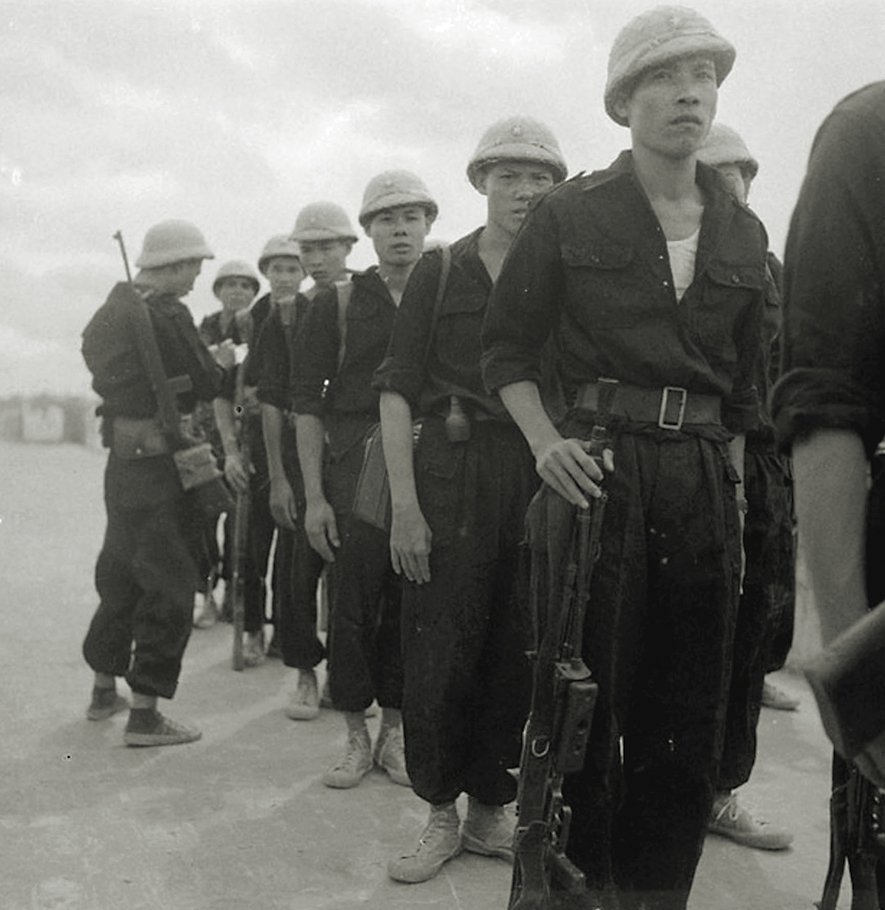
Vandenberghe’s most famous exploit came when one of his turned commandos revealed the location of a Viet Minh command post. Vandenberghe allowed himself to be bound as a prisoner and carried along by his men in Viet Minh uniform, passing through checkpoints by insisting they were going to collect the reward on Vandenberghe’s head. Once inside the command post, Vandenberghe was released. He and his men slaughtered everyone there, seizing a valuable cache of documents and weapons.
This fearsome NCO had little use for the officers of the French army but was impressed by the leadership of de Lattre, his former commander in France. He led his men 12 miles through enemy territory to see the general at a gathering in Phu Ly. The general was astonished to see this towering European in a Viet Minh uniform and helmet. Vandenberghe explained his appearance as necessary while he operated almost exclusively behind enemy lines. De Lattre was taken by this odd but unforgettable warrior, remarking a few days later: “It’s a bit as if a tiger, in addition to its fangs and claws, received a hunting license…”
Even in these conditions, Vandenberghe stood out for waging a vicious and pitiless war using methods the French command found disturbing. He drove his men hard—but any complaints were met with a reminder that, without him, his turncoat troops “would be in jail or eaten by maggots.” Desertions were frequent. Vandenberghe was shot in the back by one of his own men in 1949. After returning from medical treatment in France he became even more unrestrained. His NCOs struggled to keep him in check, especially in his dealings with the civilian population. Vandenberghe paid little heed to the criticism of his methods by French officers, insisting that war was about killing so they were best to leave him to it. This remark showed his disdain for his superiors.
On Jan. 6, 1952, at a time when most of 24 Commando was on leave, traitorous sentries allowed a Viet Minh team to enter the camp. The assassins moved silently and Vandenberghe was butchered in his sleep by a former Viet Minh officer under his command. Ten others were killed. The few wounded who survived included Sgt. Tran Dinh Vy, who went on to serve in the army of South Vietnam. Arriving in France after the collapse of South Vietnam in 1975, Vy joined the French Foreign Legion, attaining the rank of colonel.
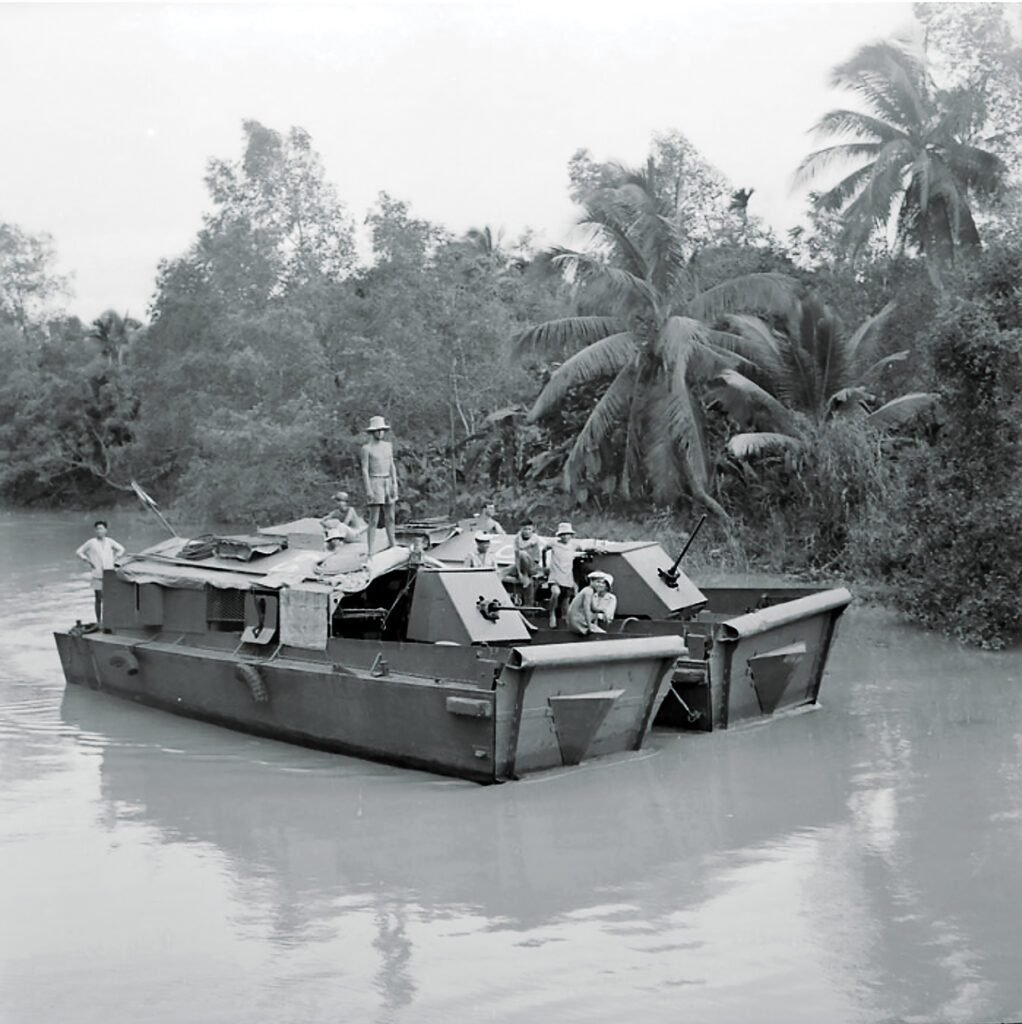
Wounded seven times by bullets, grenades, and mines before his death, Vandenberghe became the most highly decorated French NCO of the 20th century. An obituary in a leading Paris newspaper noted that the war enabled Vandenberghe to “find in the combats of the jungle the blossoming of his barbaric personality.” Only five days after Vandenberghe’s death, de Lattre died of cancer in Paris and was laid to rest alongside his son, Bernard, marking the end of the short but eventful friendship between the king, his prince, and the tiger who defended them.
After the fall of Dien Bien Phu in May 1954, the French command decided to evacuate the southern half of the Red River Delta. Hundreds of Vietnamese began deserting the French forces. Two sections of 35 Commando murdered their French commanders and two French NCOs before joining the enemy.
With the French war over, the native remnants of the commando groups assembled at Haiphong and headed to South Vietnam to form the 1st Marching Commando Battalion (BMC). Their French officers and NCOs were sent to Algeria to continue French experiments in counterinsurgency. Capt. Delayen of 13 Commando formed the Yatagan Commando in Algeria, a mixed unit of French and Algerians operating along the lines established by the North Vietnam commandos. Vandenberghe’s remains were repatriated to France from the Nam Dinh cemetery in 1989, where they were interred in a monument honoring the “Black Tiger” at the National NCO Academy outside Pau.
Dr. Andrew McGregor is director of Aberfoyle International Security, a Toronto-based consultancy specializing in military and security issues.
This story appeared in the 2023 Summer issue of Vietnam magazine.
historynet magazines
Our 9 best-selling history titles feature in-depth storytelling and iconic imagery to engage and inform on the people, the wars, and the events that shaped America and the world.


